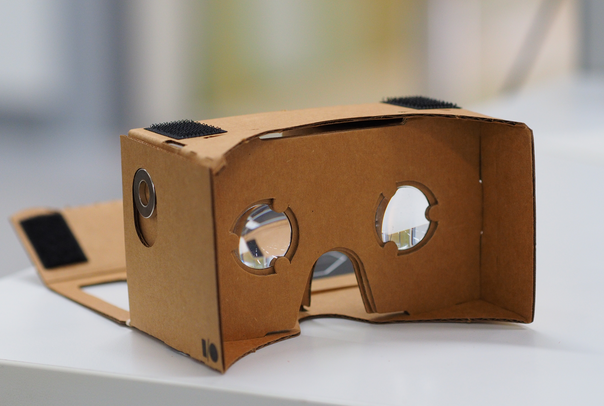
Google started a new journey of virtual reality (VR) more than a year ago, and its first VR headset, Google Cardboard, is already a massive hit among users. The world's largest Internet search company on Wednesday shared some interesting milestones it has achieved in the VR space over the past year and a half.
In an official blog post by Google's new vice-president of VR, Clay Bavor, the company revealed it shipped more than 5 million Google Cardboard VRs around the world. Google's Cardboard viewer is a simple wearable device that allows users to experience VR through mobile apps. The simplicity of Google Cardboard heralded several variants from other companies in different sizes and shapes, such as the NYT Cardboard, the Star Wars Cardboard and the Mattel Cardboard.
With 5 million shipments around the world, Google said Cardboard apps have been downloaded and installed 25 million times from its Play Store. The most popular app, based on installs, user ratings and reviews, is "Chair in a Room" followed by the likes of "Vrse", "Lamper VR: Firefly Rescue", "Caaaaard-board!" and "Proton Pulse".
Google also revealed users took great advantage of YouTube's support for VR videos. In November last year, the company said its video-sharing site could be used to watch VR videos from a mobile device inserted inside Google Cardboard viewer. More than 350,000 hours of YouTube videos had been watched in VR ever since.
To make personal experiences memorable, Google integrated camera within its Cardboard app in December last year to capture images and view them in VR. According to Google, more than 750,000 VR photos were taken using Cardboard Camera.
Google also conducted VR educational expeditions to hundreds of places around the world. The company said 500,000 students went on virtual trips to places like the White House and the Republic of Congo.
Google Cardboard is an interesting piece of futuristic equipment that lets you experience virtual reality at low cost. The Cardboard viewer is made up of two magnets, a few Velcro straps, two lenses, a single rubber band and a piece of cardboard, of course. Once setup, a smartphone slides into the viewer and compatible apps let viewers experience VR.
Recently, Google added spatial audio support to enhance the VR experience on Cardboard. But the VR offering is not limited to Cardboard as the company might be exploring the space quite intensely. Google has set up a new division for virtual reality computing, and is looking for new talents. Earlier this week, a new job positing indicated Google was looking for a new hardware engineer and a VR team lead to build new VR products for consumers.
The virtual reality space is gaining a lot of traction, and companies like Oculus, PlayStation, LeEco and HTC have their hands full with development of their new products in this sector. Oculus Rift, LeEco3D Helment and HTC Vive are high-end VR headsets with their own screens. But Google aims at making the VR experience accessible to all.
In an exclusive interview with TIME on Wednesday, Bavor said: "VR is too important and too powerful a medium to be accessible to only a few."















